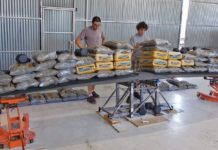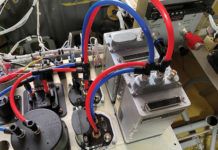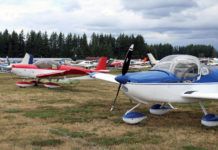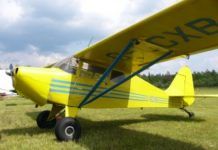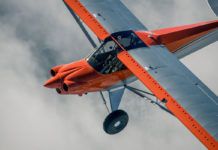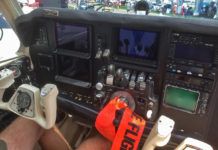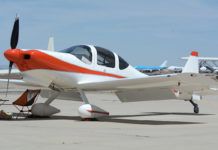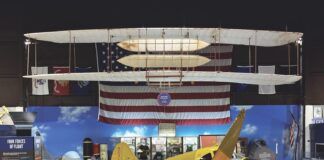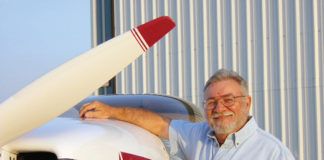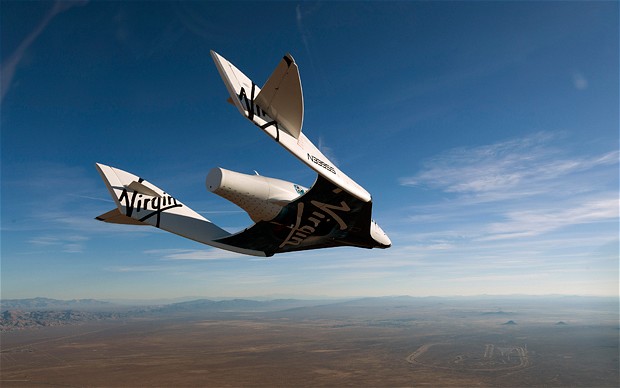
Losing people in a flight program is gut-wrenchingly hard and today I feel for all of the folks at Scaled Composites. None of them set out to lose a friend and injure another when they prepared to launch SpaceShipTwo last Friday. Their goal was the same as every person or team that has ever taken a new flying machine aloft–to test it and return with good data to prove its worth, make it better and move the program forward. Then everyone goes home and has a nice dinner at home with their family.
I have seen that happen countless times. I have also seen the dreadful cases when it does not. Something bad happens, the team is in shock, and the grief can be paralyzing as we think of the family of those lost. We honor their memory by continuing on, but each time we lose a little of ourselves in the process. It is painful. It leaves scars. Eventually, you begin to ask yourself if any of it is worth it.
The truth is, for those who choose to set foot in the arena, it really is. We believed that going in and we have to continue to believe it in order to progress. The history of humanity’s progress in exploration is written in the blood of those who have gone before. Whether that progress was made on the ground, on the sea or in the air. There is a great deal of risk in doing something for the first time and yet more risk in doing something that exposes the human body to forces far beyond what it can tolerate and survive. Aviation is truly risky because of that exposure. Upping the ante to supersonic flight near the edge of space simply makes it exponentially worse. And such are the lessons learned from the space programs, both governmental and commercial and from the SpaceShipTwo accident.
The best we can do is to look realistically at risks and try to come up with ways to protect ourselves from failures. In my years at NASA, I was at the pointy end of space flight operations. We learned the hard way that there was never any question too small nor any problem too insignificant that didn’t merit addressing.
I have spent hours—days, really–sitting in meetings listening to presentations and discussions over something as seemingly trivial as a shallow scratch on the inside bore of a Space Shuttle fuel line. If that line feeds a monstrous turbo pump feeding fuel to a massive rocket engine, we can’t simply accept the scratch. We have to ask if the fuel line has sufficient strength to hold the required pressure even with the scratch present. We have to ask that because the wall of the line was deliberately designed to be as thin as possible to save weight. But not too thin.
So we ask what caused the scratch in the first place. Did a particle come from upstream? If so, what came apart? Where did the particle go? Is it still in the engine? Could it get into a bearing? Disrupt a seal? Repairing the scratch is an issue because the edges might cause localized flow disruption or heating. Can we be sure that it won’t get worse? That it won’t turn into a crack?
NASA solved problems like this by creating a huge organization that was, at times, mind-numbingly difficult to deal with. We often wished for our own hangar–just us, our airplane and the total responsibility for deciding if a flight was safe or not. No bureaucracy, no review boards, no piles of paperwork or safety reviews.
But the truth is, those very things are what kept us asking questions of one another, kept us probing for answers. We had a saying for this process: We called it pounding everything flat to within a nanometer. We had a process that allowed the most junior guy in the back row to listen to all the arguments and then stand up and object. While those of us at the table might secretly sigh and wish the room had stayed quiet when we asked for objections, we knew that this was how we stayed safe, by continuously questioning ourselves. It was maddening. It was frustrating. And it was necessary.
And this frames the challenge faced by the commercial space industry. “Commercial” connotes the need to eventually make a profit and therefore, efficiency is important. They don’t have thousands of people to probe and question; they have only a few. No matter how big they get or how successful, the number will still be a few. When you have no one to look over your shoulder, no peer to review your work, you are frighteningly exposed. You have no back-up, no second set of eyes.
An old friend of mine used to say that if you weren’t at least a little afraid when taking a new flying machine aloft, you clearly didn’t understand what it was that you were about to do. And it’s true. You need always to have that edge of doubt, that nagging guy on your shoulder asking if you have thought of everything. Because a small organization doesn’t have the little guy in the back row to raise his (or her) hand.
Flying spacecraft is an extremely high-energy game. While we don’t yet know–and may not for some time—what precisely happened to SpaceShipTwo, we do know that at the speeds and altitudes at which it was flying, there is little forgiveness of error. The energy is too high, the aerodynamic loads too large. Even the X-15, built like a stove pipe and hell-for-stout, had an inflight break-up when it got sideways and into a spin at extreme speed and altitude.
Flying into or near the edge of space is very, very hard. It is maddeningly hard. If you haven’t tried it, it has almost nothing to do with the level of difficulty of atmospheric flight, which is itself difficult enough. Failures in spaceflight usually come down to an engineering explanation for the root cause. For the loss of Challenger, it was an O-Ring that got too cold for the design of the joint. For the loss of Columbia, it was a piece of foam that didn’t stay attached to the tank and, when it flew free, knocked a hole in the fragile high-temperature leading edge of the wing. But in truth, both of these were really “failures of imagination,” as was so eloquently stated by a friend and colleague who took over the Space Shuttle program after the loss of Columbia. “We simply never imagined that this failure could happen,” he said.
And that is the reason that we have to accept a certain level of risk as we try to fly in space. We can’t imagine everything that can happen. If we could somehow travel back in time and advise our forebears of problems they would encounter, they might say, “thanks, we never would have thought of that ourselves.” Or, they might look at us strangely and say “go away…we think we have this figured out, and we’ll never go if we don’t accept some risk.”
We have to let people take risks, just as we have to let our kids fall off their bikes and skin their knees. Without taking some risk, we will never rise above the level of where we are now. But we have to take measured risks. We have to think about back-ups. We have to understand that if we accept a potentially fatal risk without a back-up when a back-up was available, we might be hurting the future just as we are hurting ourselves in the present. For the public is neither tolerant of failure nor of taking risks. At some point, with regard to public access to space, accidents may instigate a hue and cry, demanding regulations that prohibit the taking of any risk at all.
At that point, the game is over. Exploration dies. The race stagnates. It is a huge responsibility, sitting at the junction of risk and reward. It affects more than ourselves, but also future generations and the dreams of humanity. Apart from the technical challenges, that’s why spaceflight is so very, very hard. So maddeningly hard.
Originally published on AVweb: http://www.avweb.com/blogs/insider/Risk-and-Reward-in-The-Thin-Air-223059-1.html

